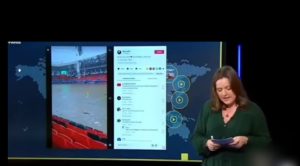
لفظ، أمس، شاب في عقده الثاني، أنفاسه الأخيرة، بإحدى مستشفيات مراكش، متأثرا بجروحه البليغة، التي اصيب بها في حادثة تصادم بين دراجتين ناريتين، يوم الاربعاء الماضي، بمدينة تحناوت.
وكانت مدينة تحناوت، قد شهدت الاربعاء الماضي، حادثة سير مورعة، اثر تصادم بين دراجتين ناريتين، أسفرت عن اصابة 3 أفراد بجروح متفاوتة الخطورة، حالة واحد منهم وصفت بالخطيرة، ما استدعى نقلهم الى مستشفى ابن طفيل بمراكش لتلقي العلاجات الضرورية.
وأكدت المصادر، أن أحد هؤلاء المصابين في هذه الحادثة المروعة، لفظ أنفاسه الأخيرة، متأثرا بجروحه البليغة، فيما يواصل فريق طبي متابعة حالة اثنين اخرين حالتهما الصحية مازالت غير مستقرة.
![]()







